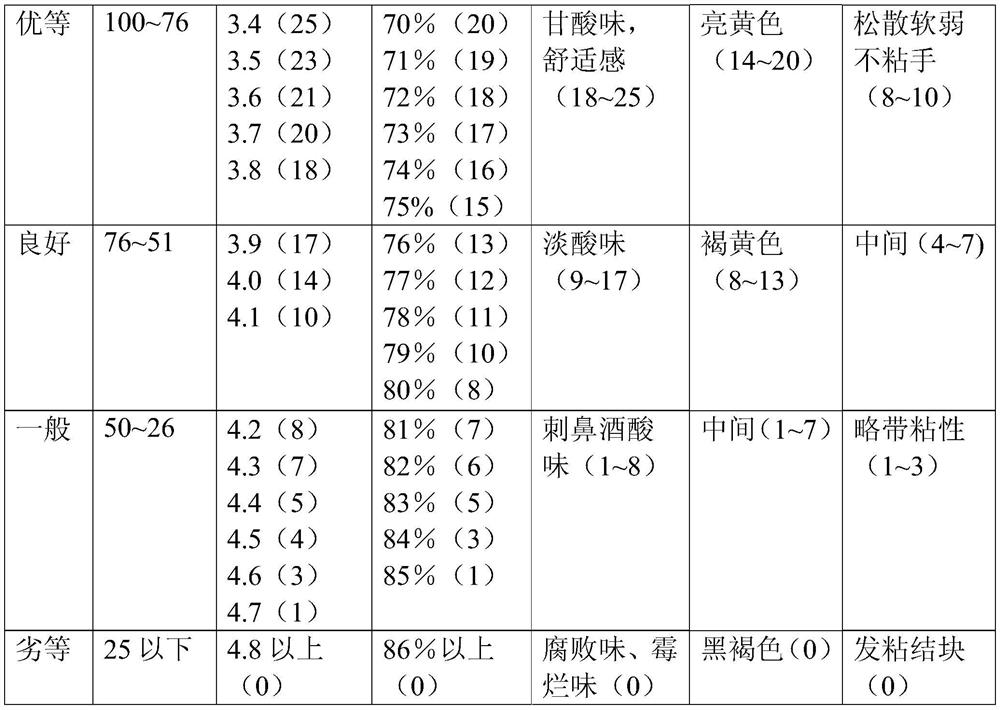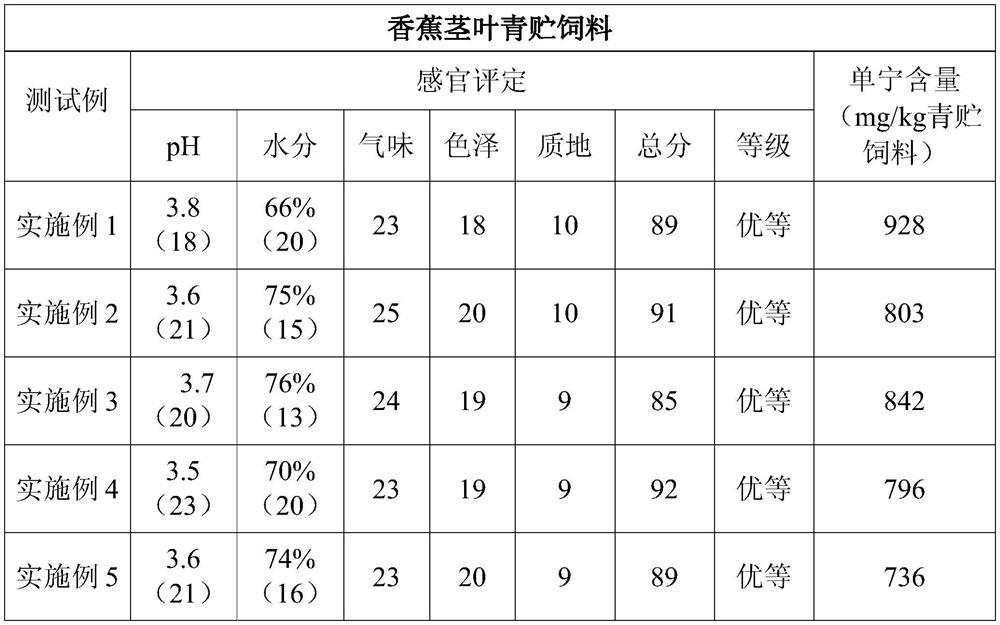A method for co-producing silage and vegetable tanning agent with all components of banana stems and leaves
A technology of banana stem and leaf and vegetable tanning agent is applied in the field of agricultural waste resource utilization, and can solve the problems of reducing the nutritional quality of banana stem and leaf silage, increasing other raw material costs and labor costs, and perishable banana stem and leaf silage. , to achieve excellent overall quality, improve the quality of silage, and promote the effect of fermentation
- Summary
- Abstract
- Description
- Claims
- Application Information
AI Technical Summary
Problems solved by technology
Method used
Image
Examples
Embodiment 1
[0020] A method for co-producing silage and vegetable tanning agent with the whole components of banana stems and leaves, comprising the following steps:
[0021] (1) Pulverizing and squeezing: first whole plant banana stem and leaf is crushed to 2~5cm, add the rice husk of banana stem and leaf weight 6% after pulverizing, carry out squeezing to water content about 60% by double-screw press again, respectively Collect solid residues and liquid residues from banana stems and leaves;
[0022] (2) Treatment of solid residues: first brew glutinous rice and filter out glutinous rice wine to obtain wet distiller's grains; mix lactic acid bacteria, tannase, wet distiller's grains and citric acid evenly to make compound silage, the process is as follows, dissolve 5g of lactic acid bacteria In 1 liter of sugar water, every liter of sugar water contains 150g of molasses. After 24 hours of sealed fermentation, add 5g of tannase, 30g of wet distiller's grains and 35g of citric acid, and s...
Embodiment 2
[0025] A method for co-producing silage and vegetable tanning agent with the whole components of banana stems and leaves, comprising the following steps:
[0026] (1) Pulverizing and squeezing: first whole plant banana stem and leaf is crushed to 2~5cm, add the rice husk of banana stem and leaf weight 5% after pulverizing, carry out squeezing to water content about 70% by twin-screw press again, respectively Collect solid residues and liquid residues from banana stems and leaves;
[0027] (2) Treatment of solid residues: First brew glutinous rice and filter out glutinous rice wine to obtain wet distiller's grains; mix lactic acid bacteria, tannase, wet distiller's grains and citric acid to make a compound silage agent, the process is as follows, dissolve 2g of lactic acid bacteria In 1 liter of sugar water, every liter of sugar water contains 160g of molasses. After 24 hours of sealed fermentation, add 15g of tannase, 20g of wet distiller's grains and 25g of citric acid, and s...
Embodiment 3
[0030] A method for co-producing silage and vegetable tanning agent with the whole components of banana stems and leaves, comprising the following steps:
[0031] (1) Pulverizing and pressing: first whole plant banana stem and leaf is crushed to 2~5cm, add the rice husk of banana stem and leaf weight 4% after pulverizing, carry out squeezing to water content about 75% by double-screw press again, respectively Collect solid residues and liquid residues from banana stems and leaves;
[0032] (2) Treatment of solid residues: First brew glutinous rice and filter out glutinous rice wine to obtain wet distiller's grains; mix lactic acid bacteria, tannase, wet distiller's grains and citric acid to make a compound silage agent, the process is as follows, dissolve 2g of lactic acid bacteria In 0.5 liters of sugar water, every liter of sugar water contains 140g molasses, after 24 hours of sealed fermentation, add 5g tannase, 20g wet distiller's grains and 25g citric acid, stir evenly; ...
PUM
 Login to View More
Login to View More Abstract
Description
Claims
Application Information
 Login to View More
Login to View More - R&D
- Intellectual Property
- Life Sciences
- Materials
- Tech Scout
- Unparalleled Data Quality
- Higher Quality Content
- 60% Fewer Hallucinations
Browse by: Latest US Patents, China's latest patents, Technical Efficacy Thesaurus, Application Domain, Technology Topic, Popular Technical Reports.
© 2025 PatSnap. All rights reserved.Legal|Privacy policy|Modern Slavery Act Transparency Statement|Sitemap|About US| Contact US: help@patsnap.com



